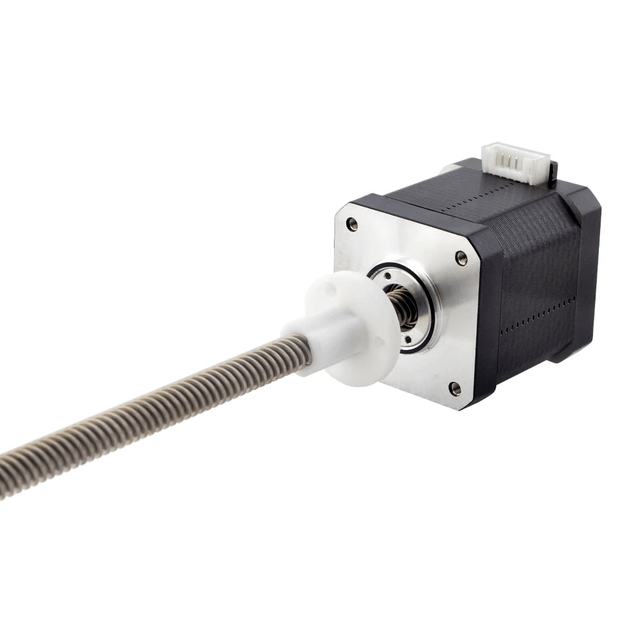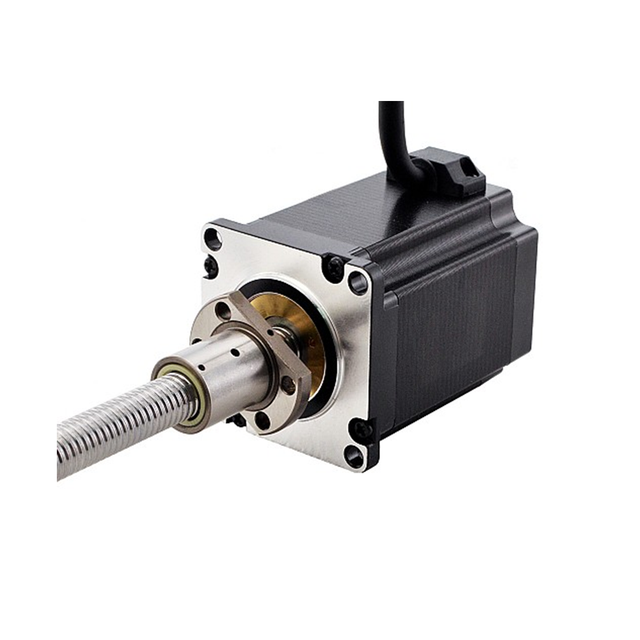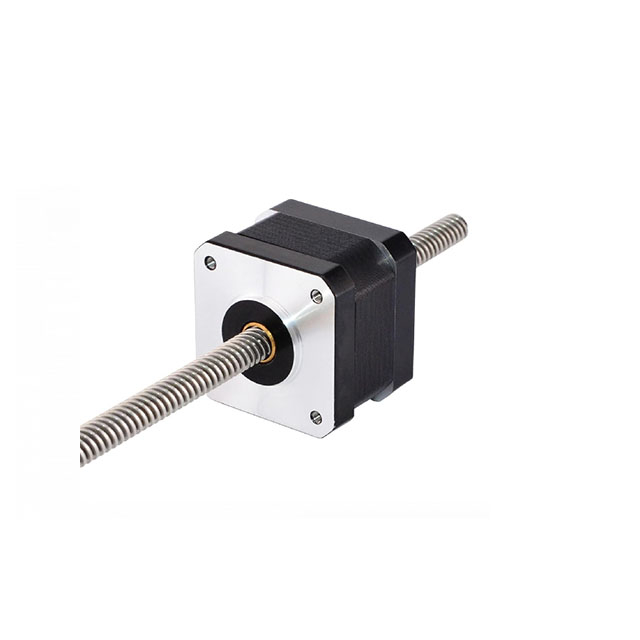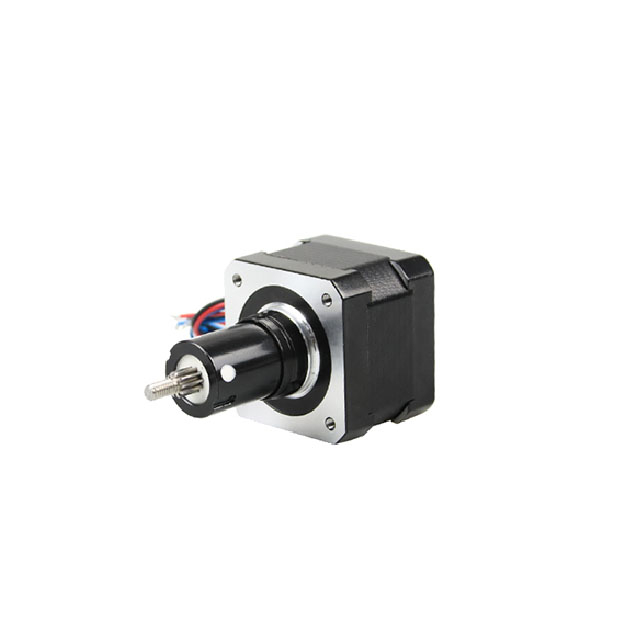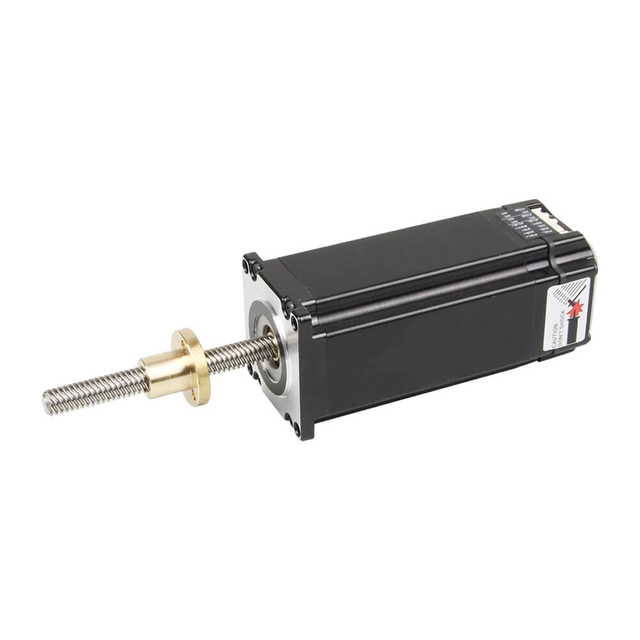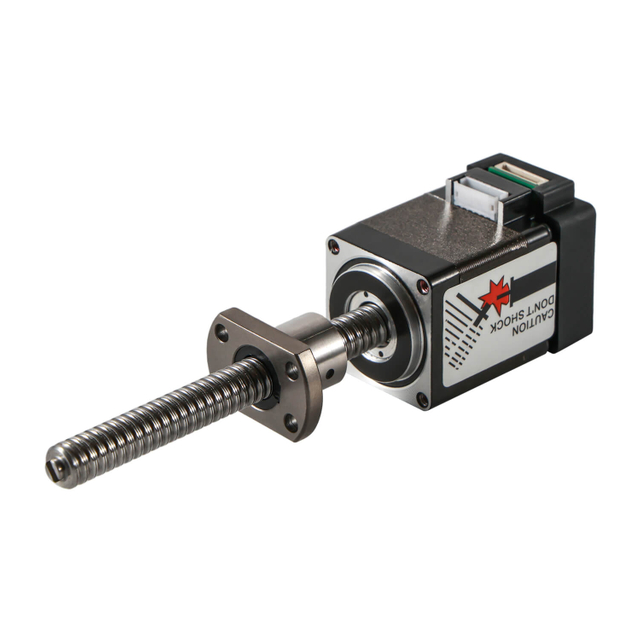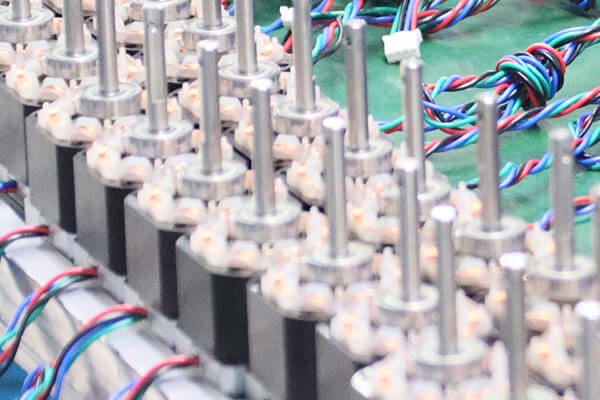
Linear motors have become a central technology in today's high-precision automation, semiconductor manufacturing, CNC machines, robotics, and advanced transportation systems. A common question that arises when selecting or integrating these systems is: Are linear motors AC or DC? Understanding this distinction is essential for designing efficient motion systems with optimal performance, accuracy, and reliability.
This comprehensive guide explores the electrical nature of linear motors, their operating principles, types, control requirements, and real-world applications. With detailed explanations and technical depth, this article answers the question thoroughly while giving engineers and decision-makers practical insights.
What Defines a Linear Motor's Electrical Type?
A linear motor's electrical type—whether it is classified as AC or DC—is determined by the type of electrical power used to energize its coils and create the magnetic field that produces linear motion. The same principles that classify rotary motors apply directly to linear motors.
1. Type of Current Supplied to the Windings
If the motor operates using alternating current, where the polarity of voltage changes over time, it is an AC linear motor.
If the motor operates using direct current, where the polarity remains constant, it is a DC linear motor.
2. Motor Construction and Magnetic Field Generation
A linear motor's design plays a major role in determining which current type it requires:
AC linear motors (e.g., linear induction and linear synchronous motors) rely on a three-phase AC supply to generate a traveling electromagnetic field along the stator.
DC linear motors (e.g., voice coils and linear stepper motors) rely on steady or pulsed DC to energize coils in a controlled sequence.
3. Control Method / Drive Electronics
Modern drive systems also influence classification:
4. Behavior of the Magnetic Field
The electrical type is directly tied to how the magnetic field is produced:
AC creates a continuously moving magnetic wave, ideal for long stroke and high-speed applications.
DC creates static or stepwise shifting fields, ideal for short stroke, high-precision motion.
In Summary
A linear motor's electrical type is defined by:
Type of power supplied (AC or DC)
Coil energizing method
Drive electronics
Magnetic field behavior
This classification determines how the motor operates, how it's controlled, and which applications it is best suited for.
Are Linear Motors AC or DC?
Most linear motors are AC motors.
In modern industrial systems, linear motors are predominantly AC, especially the widely used linear induction motors (LIMs) and linear synchronous motors (LSMs). These motors rely on alternating current to produce a traveling electromagnetic field that drives the mover along a straight path.
However, there are also DC-based linear motors, though they are less common. These include linear stepper motors, voice coil actuators, and certain custom DC linear drive systems.
So, the correct and complete answer is:
Linear motors can be either AC or DC, but industrial high-force and high-speed linear motors are mostly AC.
Types of Linear Motors and Their Electrical Classification
1. Linear Induction Motors (LIMs) — AC Motors
Linear induction motors operate on the same principle as traditional rotary induction motors. They use a three-phase AC supply to generate a traveling magnetic field across the stator.
Key Characteristics
Powered by three-phase AC
High speed and high force capability
No contact or wear between primary and secondary
Common in transportation systems (e.g., maglev trains), conveyors, and high-speed automation
Why AC?
LIMs rely on alternating current to continuously create a moving electromagnetic wave that pushes the secondary conductor forward. DC cannot generate this traveling wave.
2. Linear Synchronous Motors (LSMs / PMLSMs) — AC Motors
Linear synchronous motors are powered by AC supply and utilize permanent magnets or excitation windings to generate synchronous motion.
Key Characteristics
Extremely high precision and accuracy
High efficiency, quiet operation
Used in semiconductor fabrication tools, CNC machining, pick-and-place systems
Why AC?
AC allows precise phase control and synchronism between the magnetic field and the mover, enabling ultra-accurate positioning.
Technically, stepper motors are powered using DC, but they operate through digitally controlled pulses.
Key Characteristics
Why DC?
Stepper drivers convert DC power into sequential coils energization. This creates discrete movement steps without requiring an encoder.
4. Voice Coil Actuators — DC Motors
Voice coils (also called moving-coil linear actuators) operate similarly to loudspeakers and are strictly DC motors.
Key Characteristics
Extremely smooth motion
High acceleration
Not suitable for long distances (short stroke only)
Used in optics, autofocus systems, precision testing
Why DC?
A steady or variable DC current directly controls force output—perfect for analog precision and closed-loop systems.
5. Brushless Linear Motors — AC or DC (Depending on Drive Method)
Brushless linear motors may resemble rotary BLDC motors expanded into a straight configuration. Their electrical classification can be nuanced:
Electrically AC, because the stator is fed with three-phase AC
Powered by DC, because drives typically convert DC supply into controlled AC output
Common Applications
AC Linear Motors vs DC Linear Motors: A Detailed Comparison
AC and DC linear motors are both designed to produce straight-line motion, but they differ significantly in power type, performance characteristics, and suitable applications. Understanding these differences helps engineers choose the right motor for precision, speed, force, and control requirements.
1. Power Source
AC Linear Motors
Powered by alternating current, typically three-phase.
Drive units convert supply power into controlled AC waveforms.
Required for generating a traveling electromagnetic field.
DC Linear Motors
Powered by direct current, either constant or pulsed.
Includes stepper-driven linear motors and voice coil actuators.
Uses DC voltage to create force or discrete steps.
2. Control Method and Complexity
AC Linear Motors
Require servo drives or inverters to precisely control frequency, phase, and amplitude.
More complex electronic control, enabling high dynamic response.
DC Linear Motors
Use simpler control methods such as DC amplifiers or stepper drivers.
Easier to set up, especially for low-power or short-stroke applications.
3. Motion Characteristics
AC Linear Motors
Deliver smooth, continuous motion.
Ideal for high speed, long travel, and high precision.
Capable of extremely high acceleration and deceleration.
DC Linear Motors
4. Speed and Acceleration
AC Linear Motors
DC Linear Motors
Typically lower speed unless very lightweight.
Voice coil actuators excel at fast, short-stroke acceleration.
5. Force Output
AC Linear Motors
Capable of high continuous and peak forces.
Suitable for heavy loads, machine tool axes, and transportation systems.
DC Linear Motors
Lower overall force compared to AC types.
Voice coils provide precise but limited force.
Stepper-based linear drives offer moderate force but not suitable for heavy dynamics.
6. Precision and Positioning
AC Linear Motors
Exceptional precision when combined with encoders.
Perfect for semiconductor equipment, laser cutting, and ultra-accurate automation.
DC Linear Motors
7. Stroke Length
AC Linear Motors
Designed for long travel distances, often several meters.
No mechanical contact between primary and secondary, enabling long life.
DC Linear Motors
8. Efficiency and Heat Management
AC Linear Motors
DC Linear Motors
9. Maintenance Requirements
AC Linear Motors
DC Linear Motors
10. Application Suitability
AC Linear Motors Ideal For:
DC Linear Motors Ideal For:
Summary Comparison Table
| Feature | AC Linear Motors | DC Linear Motors |
| Power Type | Alternating Current | Direct Current / Pulsed DC |
| Speed | Very High | Moderate / Short-stroke fast |
| Force | High | Low to Moderate |
| Travel Length | Long | Short |
| Control Complexity | High | Low to Medium |
| Precision | Very High | High (short range) |
| Applications | Industrial automation, CNC, maglev | Optics, small robotics, instrumentation |
How to Choose Between AC and DC Linear Motors
Selecting the correct motor type depends on application requirements. Below are the primary considerations.
Choose an AC Linear Motor When You Need:
High speeds (5–15 m/s)
High force (hundreds to thousands of Newtons)
Long stroke lengths
Extremely high accuracy and repeatability
Superior efficiency for demanding industrial applications
Examples:
Semiconductor wafer handling
High-speed automation lines
CNC machine axes
Maglev propulsion systems
Choose a DC Linear Motor When You Need:
Short strokes (0.5–100 mm)
Very smooth, analog force control
Compact size and quick response
Simpler electronics and lower cost
Examples:
Why Modern Industry Prefers AC Linear Motors
Modern industrial automation increasingly relies on AC linear motors because they deliver superior performance, higher throughput, and greater long-term reliability than most DC-based linear motor designs. Their ability to convert electrical energy into smooth, continuous linear motion makes them the preferred choice for demanding applications across manufacturing, robotics, machining, and transportation.
Below are the key reasons AC linear motors dominate today's industrial landscape.
1. Superior Speed and Acceleration
AC linear motors excel in applications requiring high speed, rapid acceleration, and fast settling times.
They can reach speeds of 5–15 m/s, far beyond most DC linear actuators.
The traveling electromagnetic field produced by three-phase AC enables seamless continuous motion without step losses or mechanical limits.
This makes them ideal for:
2. Exceptional Precision and Repeatability
Modern AC linear motors—especially linear synchronous motors (LSMs)—offer submicron positioning accuracy when combined with high-resolution feedback.
Their smooth electromagnetic travel eliminates mechanical backlash, enabling:
Ultra-precise stage positioning
Perfect repeatability for hundreds of millions of cycles
Zero mechanical wear in motion-generating components
Such characteristics are crucial in industries like semiconductor manufacturing, where accuracy directly affects product quality.
3. Higher Efficiency With Lower Heat Generation
AC linear motors are engineered for high electromagnetic efficiency, making them more energy-efficient under continuous duty cycles.
Their optimized magnetic field control reduces:
Copper losses
Iron losses
Thermal buildup
Lower heat generation results in:
4. Long Travel Capability Without Mechanical Limits
AC linear motors support virtually unlimited stroke lengths, unlike voice coil or stepper-based DC linear systems, which are limited by physical constraints.
Benefits include:
Scalability for large-format machines
No mechanical transmission components like screws or belts
Reduced maintenance and increased uptime
This makes AC linear motors ideal for long-travel industrial axes and transportation systems like maglev trains.
5. Maintenance-Free Motion Generation
Because AC linear motors contain no brushes, belts, or ballscrews, they experience almost no wear in the force-producing components.
This leads to:
Minimal scheduled maintenance
Higher system availability
Lower total cost of ownership
Only the guideways or linear bearings require periodic service.
6. Greater Force Density and Load Capacity
AC linear motors deliver high continuous and peak forces, far exceeding those achievable with DC linear motors.
Examples:
Heavy machine tool axes
High-force robotic transfer systems
Pressing, machining, and forming equipment
Industries choose AC motors because they support both high loads and high dynamics simultaneously, something DC solutions cannot match.
7. Smooth, Vibration-Free Motion
With perfectly controlled sinusoidal AC waveforms, AC linear motors provide:
These characteristics improve product quality in:
8. Advanced Control Capabilities
AC linear motors work with sophisticated servo drives that offer:
High-bandwidth current control
Adaptive tuning
Integrated safety functions
Real-time diagnostics
Field-oriented control (FOC)
Ethernet-based communication
These capabilities align with the needs of Industry 4.0 and smart factories, supporting seamless integration with modern automation systems.
9. Better Long-Term Reliability
AC linear motors are engineered for continuous-duty industrial performance.
Their lack of mechanical wear points and efficient thermal management allow them to run:
24 hours a day
At high speeds
With minimal maintenance
For manufacturers, this translates into higher productivity and lower downtime.
10. Ideal for High-End Automation and Future Manufacturing
Industries that require precision, speed, and cleanliness—such as electronics fabrication, medical device production, and cleanroom operations—depend heavily on AC linear motors.
They are becoming fundamental to:
Semiconductor lithography and inspection
Large-format CNC systems
High-speed robotic stages
Automated warehouses
Maglev and smart transport systems
Their performance aligns with modern manufacturing's demand for fast, accurate, flexible, and low-maintenance motion solutions.
In Summary
Modern industry prefers AC linear motors because they offer:
Higher speed and force
Better precision and efficiency
Longer travel and lower maintenance
Advanced control and adaptability
These advantages make AC linear motors the dominant technology in today's high-performance industrial automation and motion control applications.
Conclusion: Are Linear Motors AC or DC?
Linear motors can be either AC or DC, but the majority of industrial-grade linear motors are AC-powered, especially linear induction and synchronous types. DC linear motors—such as stepper-based linear actuators and voice-coil actuators—serve specialized applications requiring precision but typically offer shorter travel and lower forces.
Understanding the differences allows engineers to choose the correct linear motor technology for their system requirements, optimizing performance, reliability, and machine efficiency.
English
العربية
Français
Русский
Español
Português
Deutsch
italiano
日本語
한국어
Nederlands
Tiếng Việt
ไทย
Polski
Türkçe
ພາສາລາວ
ភាសាខ្មែរ
Bahasa Melayu
ဗမာစာ
Filipino
Bahasa Indonesia
magyar
Română
Čeština
Монгол
қазақ
Српски
हिन्दी
فارسی
Slovenčina
Slovenščina
Norsk
Svenska
українська
Ελληνικά
Suomi
Հայերեն
עברית
Latine
Dansk
Shqip
বাংলা
Hrvatski
Afrikaans
Gaeilge
Eesti keel
Oʻzbekcha
latviešu
Azərbaycan dili
Български
Català


